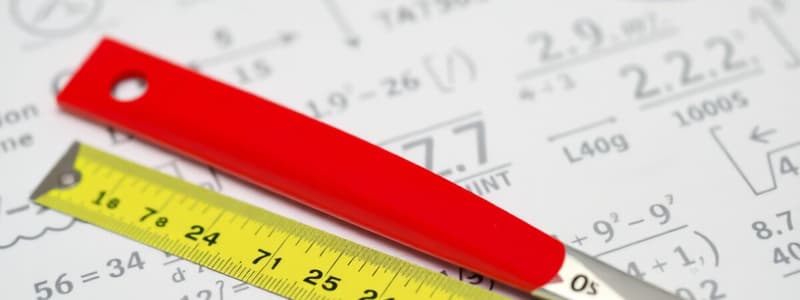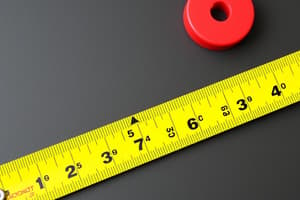Podcast
Questions and Answers
Match the measurement concepts with their descriptions:
Match the measurement concepts with their descriptions:
Iteration = Repeatable process using identical units Tiling = Pattern of adjacent units without gaps Partitioning = Subdividing a unit into fractional parts Unit-attribute Correspondence = Relationship between unit and attribute being measured
Match the measurement attributes with their respective examples:
Match the measurement attributes with their respective examples:
Length = Measured in meters Area = Measured in square meters Volume = Measured in cubic meters Time = Measured in seconds
Match the measurement types with their primary application:
Match the measurement types with their primary application:
Length = Distance between two points Area = Space within a boundary Volume = Capacity of a container Time = Duration of an event
Match the terms with their definitions:
Match the terms with their definitions:
Match the example of measurement with its associated concept:
Match the example of measurement with its associated concept:
Flashcards
Measurement
Measurement
Establishing a correspondence between a unit and an object's attribute.
Iteration
Iteration
Repeating identical units for measurement.
Tiling
Tiling
Units fit together perfectly without gaps or overlaps.
Partitioning
Partitioning
Signup and view all the flashcards
Unit-Attribute Correspondence
Unit-Attribute Correspondence
Signup and view all the flashcards
Study Notes
Conceptual Foundation
- Conceptual Description: Units must be related to measurable attributes
- Iteration: Understanding measurement involves subdividing an object and repeatedly applying the unit
- Tiling: Units are identical and adjacent, without gaps or overlaps
- Partitioning: Units are divided into smaller fractional parts to measure a portion of an object
Studying That Suits You
Use AI to generate personalized quizzes and flashcards to suit your learning preferences.



